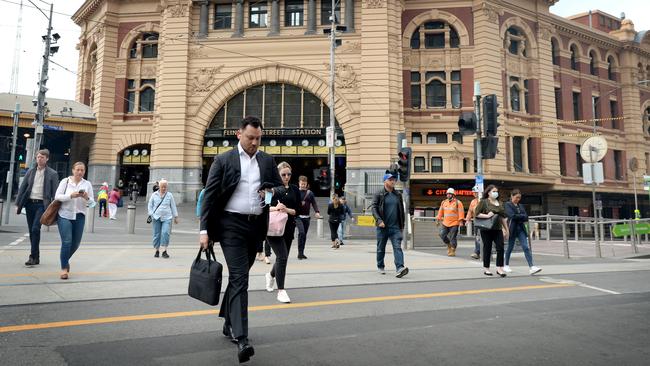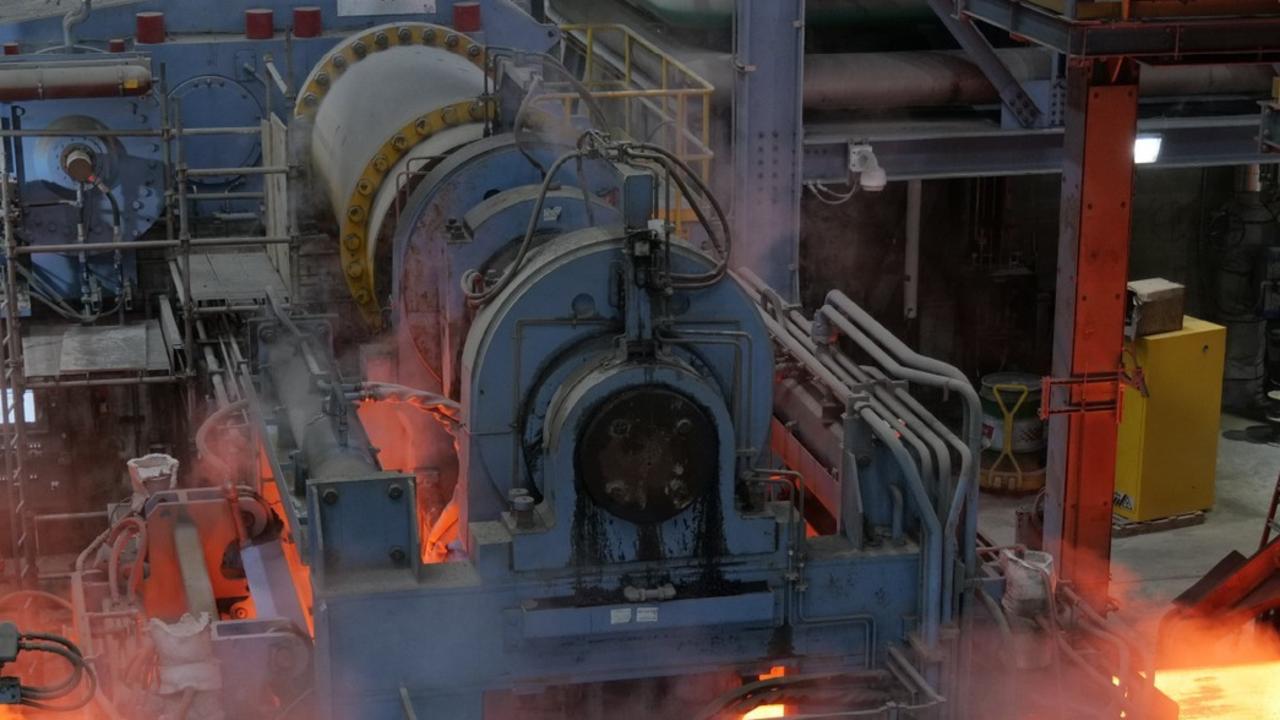Jobs surprise boosts confidence
Economists are redrawing expectations for the pace of economic recovery after better-than-expected jobs data.

Business
Don't miss out on the headlines from Business. Followed categories will be added to My News.
Economists are redrawing their expectations for the pace of the economic recovery after jobs data for December came in better-than-expected, with Australians having recouped 90 per cent of the jobs lost through the Covid crisis.
Despite a knock to confidence as NSW scrambled to get a late Covid outbreak under control, the unemployment rate fell faster-than-expected in December, to 6.6 per cent, as the economy added 50,000 jobs through the final weeks of the year, according to the Australian Bureau of Statistics.
Total employment is now just 93,000 jobs short of the pre-COVID peak of 13 million.
The 0.2 per cent drop from November’s 6.8 per cent beat the market consensus estimate of a 0.1 per cent fall, and came even as the participation rate hit a record high.
The bullish jobs number coincided with Australian shares surging to a fresh 11-month high on Thursday, marking the third day of gains after Wall Street rose strongly amid a smooth inauguration of US President Joe Biden.
The benchmark S&P/ASX 200 index ended up 0.8 per cent at 6823.7 points.
NAB economist Tapas Strickland said the latest jobs data was “overwhelmingly positive”.
“(It) highlights the strong rebound in Australian economic activity in the second half of 2020 as lockdowns and many restrictions eased across much of the country due to excellent virus control,” he said, adding that the rebound would likely continue into 2021.
“Importantly for the outlook, the unemployment rate looks like it is on a firm downward trajectory with recent data including job vacancies and consumer unemployment expectations suggesting unemployment could fall more sharply than expected by the RBA and Treasury in 2021,” Mr Strickland said.
The RBA’s expectations on the economic recovery included that the unemployment rate would not fall to the mid-sixes until late 2021.
The number of people employed across the nation rose to 12.91 million in December, with full-time workers climbing by 35,700 in the month, alongside a 14,300 rise in part-time jobs.
The participation rate, meanwhile, rose to a record 66.2 per cent, up from 66.1 per cent in November.
The underemployment rate, which takes account of workers who are employed but want to work more hours, was another big surprise, falling sharply to 8.5 per cent, down almost a full per cent from November’s figure.
The stronger-than-anticipated jobs numbers came as UBS chief economist George Tharenou upgraded his economic forecasts on the basis that the government’s HomeBuilder grant would deliver a surge in housing construction.
UBS now expects dwelling commencements for 2020 to hit 181,000, and to climb further to 230,000 in 2021, around the same level seen during the ‘boom years’ of 2015-18.
“This edges up our already above-consensus GDP forecast for 2021 to 4.3 per cent year-on-year,” Mr Tharenou said.
Suncorp chief economist Paul Brennan said he was encouraged by the numbers in the labour force report.
“There is still a long journey ahead to return the unemployment rate back to pre-COVID-19 levels, let alone for us to see a reduction to the level the RBA believes will lead to a sustained pick up in wages,“ Mr Brennan said.
“But signs from job vacancies and other leading indicators suggest that the massive stimulus measures are turning around the labour market much faster than expected,” he said.
This positions Australia well for a broader economic recovery as the year unfolds, he added.
“It also suggests that the scheduled ending of JobKeeper should not materially disrupt the recovery, providing support continues for sectors like tourism and education affected by the closure of the international border,” he said.
RBC Capital Markets’ macro rates strategist Robert Thompson also pointed to the declining risks from the end of the JobKeeper scheme.
“While we continue to see the risk of a slight increase in unemployment at this time (i.e. in the second quarter), the recent trajectory of the recovery has generally surprised us to the upside, making the “JobKeeper cliff” look far more manageable,” he said.
The drop in the unemployment rate, which is now at its lowest level since April last year, comes as businesses adjust to the lower JobKeeper rate that kicked in at the start of this month.
From January 4, JobKeeper payments for employees working 20 hours or more a week were cut from $1200 a fortnight to $1000.
Meanwhile, for workers employed for less than 20 hours a week, the payment was slashed from $750 to $650.
The scheme is due to finish at the end of March.
Acknowledging the challenges ahead, Treasurer Josh Frydenberg on Thursday pointed to the government support provided through the pandemic.
“The road ahead will be hard but with the Morrison Government delivering $251bn of direct economic support, Australians know we have their back,” he said.
Employment Minister Michaelia Cash echoed Mr Frydenberg’s sentiments, saying the better-than-expected jobs data showed that government support was working.
“These figures show that our policies like Jobkeeper and JobTrainer are working, keeping more Australians in work and skilling them for the future,” she said.
“Last year was extremely challenging for families, households, businesses and jobs, but what today’s data shows, as it did for November, is the resilience of our economy.”
The December jobs figures showed that Queensland fared best in picking up new jobs through the month, with employment across the state rising by 1.4 per cent.
But the state’s 7.5 per cent unemployment rate is still the worst in the country, followed closely by Tasmania’ 7 per cent.
The number of workers employed in Victoria rose 0.4 per cent in the month, while NSW saw a 0.4 per cent decline.
As the latest data supports the proposition of a faster-than-expected economic recovery, businesses are preparing to wean off government support, with industry groups warning of the struggles ahead.
Despite the concern about the looming loss of support, Prime Minister Scott Morrison this week reaffirmed that the Jobkeeper program will come to an end on March 28, saying the economy couldn’t run on government money forever.
But he has left the door open for further support for the sectors that are yet to recover from the pandemic.
Originally published as Jobs surprise boosts confidence



